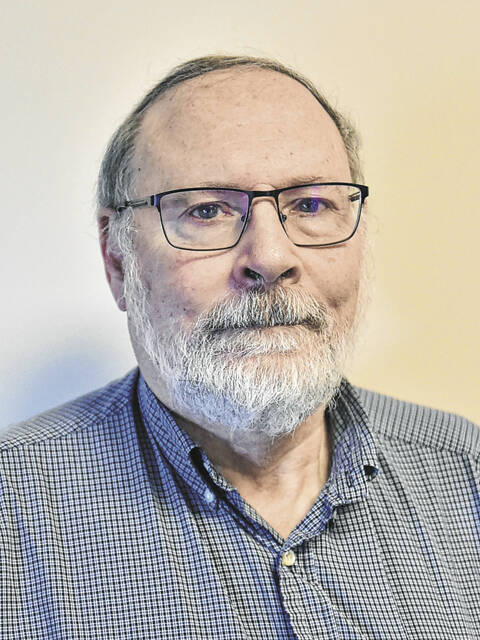
When my grandmother, Sarah, was a little girl living in Kiev, she and her brother once had to hide in an oversized kiln to escape marauding Cossacks who were terrorizing Jews.
She and my uncle, Jack, not so long later emigrated to the United States, where she married my grandfather, Jacob, also from the Ukraine, and their one daughter, Phyllis, was my mother.
Only once before this current Russian invasion of the now-independent country did I dwell on Kiev (we always spelled it that way, not Kyiv, which seems to be the latest incarnation) for long beyond hearing my grandmother’s story.
That was in 1987 when I was a member of an American delegation for The Forum for U.S.-Soviet Dialogue participating in a conference based in Kiev at a time when Mikhail Gorbachev was introducing radical ideas promoting a more open society.
The vast nation spanning Europe and Asia was called Russia before my family members fled. It was the Soviet Union when I visited. And it’s back to being Russia, though dictator Vladimir Putin seems determined to restore Soviet geography and policies.
In 1987, although our group had no authority to make decisions about anything, we were an ostensible peace mission seeking to foster better understanding between capitalistic Americans and Communistic Soviets. Anything to avoid use of nuclear weapons.
The journey included visits to Moscow, Leningrad (St. Petersburg now) and Tallin, in Estonia, but the heart of the trip revolved around meetings in Kiev.
We were newsworthy enough for some of us to appear on Ukrainian television, be interviewed by Radio Kiev and others to be interviewed by the Pravda and Izvestia newspapers.
One day, we visited the memorial at Babi Yari on the outskirts of the city. In 1941, more than 33,000 Soviet Jews were massacred by the Nazis in a ravine, and this killing field became a dumping ground for victims of several mass murders, so by the conclusion of World War II, between 100,000 and 150,000 people were buried there.
Surely, if my grandparents were not long gone by then, they would have been among those killed.
In the 1980s, many Jews, who were termed “Refuseniks,” requested freedom to emigrate to Israel. I was led to a clandestine meeting with a man who had been trying to leave for a decade and been persecuted for asking. With help, I followed a cloak-and-dagger approach, ducking away from a tour, slipping onto a subway train and checking over shoulders to ensure not being followed.
At Babi Yar, three of us delivered the kaddish, the prayer of mourning in the Jewish religion, in Hebrew. It was illegal to teach the language in the country. A fourth individual, a Roman Catholic priest, joined us, speaking English. Soviet officialdom was present, seemed startled but did not intervene.
This week, we are hearing reports the Babi Yar Memorial was damaged by Russian bombing in this siege of Ukraine.
Repression was still pervasive during the early days of Gorbachev policies. I was picked up by the KGB for performing man-in-the-street interviews in Red Square through a translator without written authorization.
When we departed the country by train to Helsinki, Finland, I was warned I might be searched, so I secreted my notes on ripped-out notebook paper inside my shoes.
I got away clean from the Soviet Union. My grandparents got away from Ukraine with their lives more than a century ago. Now, in just over a week, nearly 700,000 Ukrainians have crossed neighboring borders, running for their lives, running from Russian guns.
Still another terrible tragedy visited upon Ukrainian soil.
